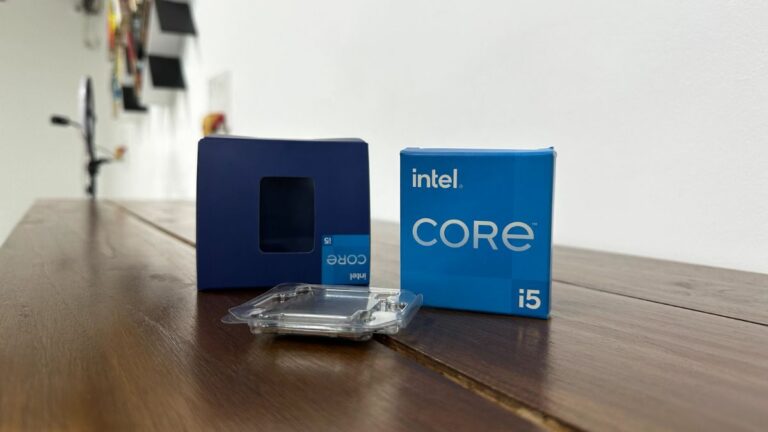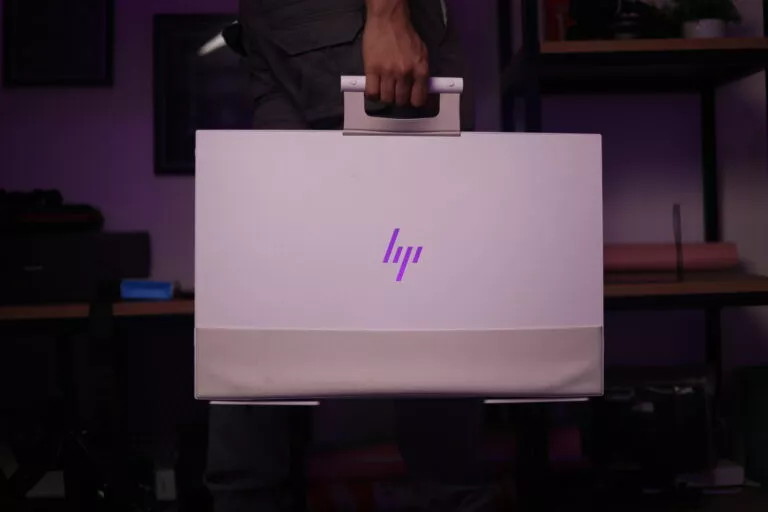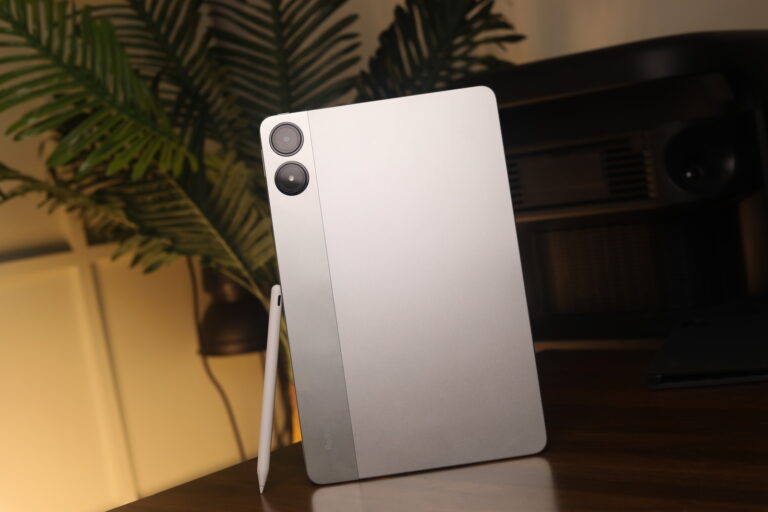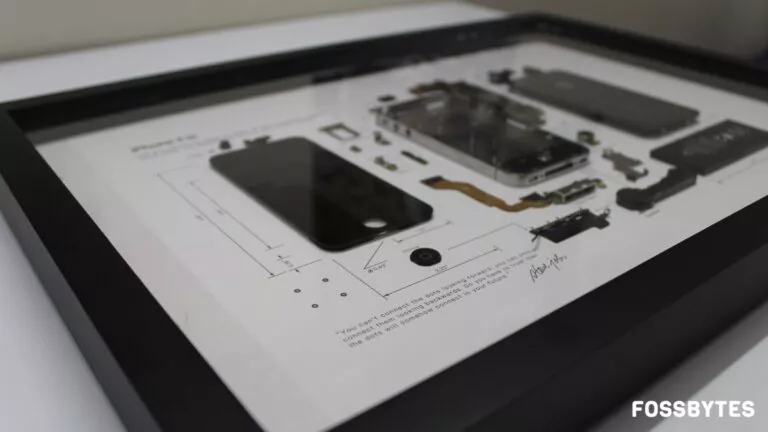NewQ 16-in-1 Docking Station: A Comprehensive Review

My biggest complaint with docking stations is that they never seem to have enough connectivity. I’m using, I’m always forced to pull out some hub or dongle to supplement the docking station’s connectivity. This has been true of many docking stations I’ve used over the last several years. HP, Lenovo, Microsoft, a variety of off-brand devices, and recently, Ugreen’s products have all left me in need. Cue the NewQ 16-in-1, with its refreshingly abundant array of connectivity.

Unlike products whose marketing make bold claims about feature counts that are padded with nonsense, NewQ’s 16-in-1 docking station abstains from that, mostly anyway. The “16” in the 16-in-1 moniker includes the power input, which is a base functionality of a docking station, which, in my opinion, should not be included. However, there are other reasons this device can stake claim to that 16-in-1 title, as we’ll see further on.
NewQ 16-in-1 at a Glance
The NewQ 16-in-1 boasts features that are not as common on docking stations. Things like USB PD passthrough for secondary devices like smartphones and tablets, card readers, and audio jacks. The impressive versatility and variety are not common for docking stations at the price point of the NewQ 16-in-1, which is currently available on Amazon for $169.99 USD.
Front
- Micro SD Card Slot
- Full-Size SD Card Slot
- 1x USB Type-A PD 18W Out
- 1x USB Type-C PD 18W Out
- 2x USB Type-A 10Gb/s
- 1x USB Type-C 10Gb/s
- 3.5mm Audio Jack
Rear
- 1x Display Port 1.4
- 2x HDMI 2.0
- 3.5mm Audio Jack
- 2x USB Type-A 2.0
- Gigabit Ethernet
- 150W DC Barrel Power Jack
(20V x 7.5A)
There’s also a power button on top of the NewQ 16-in-1 that doubles as a means to toggle the display output mode. This is exclusive to Windows, but a feature nonetheless. And in addition to that, both the NewQ’s HDMI ports and DisplayPort can be used in tandem, allowing for up to three displays.
Something that I’m always lamenting is the general lack of Ethernet connectivity greater than Gigabit speeds. Some argue that with wireless being greater than Gigabit speeds, that’s not necessary. But wireless speed measures are not at all the same. Ethernet speeds are measured as a private full-duplex medium, but wireless is measured as a shared half-duplex medium. What that means is that wired speeds have a Gigabit in both directions between only the devices connected to the wire. Wireless, on the other hand, is half of the claimed speed for each direction and is shared between all connected devices.
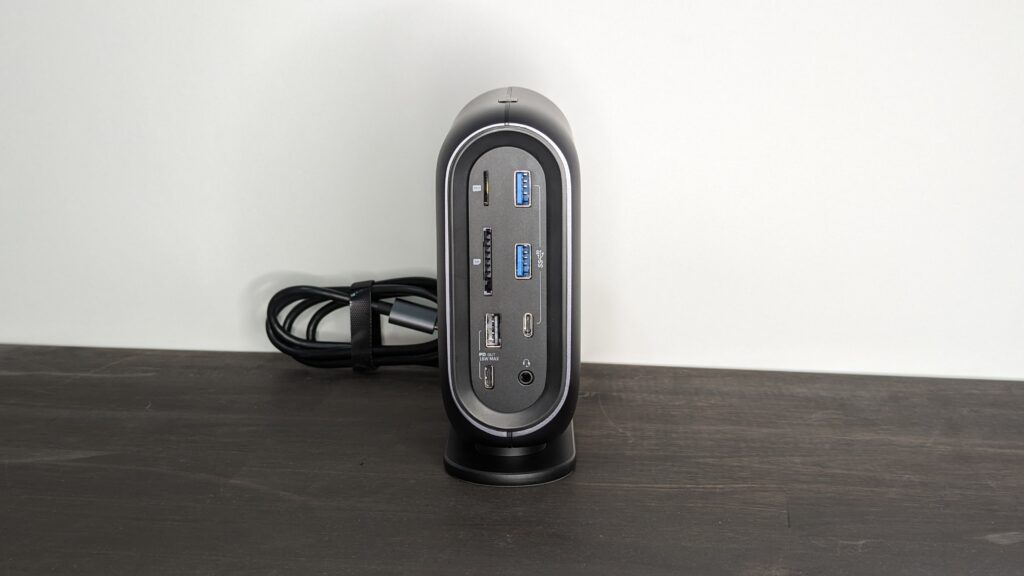
That is, if six devices are running at 1200Mb/s, a greater-than-gigabit speed, each device would share that 1200Mb/s, meaning 200Mb/s each, but then that speed is halved, allotting 100Mb/s to upload and 100Mb/s to download. Of course, this is a contrived explanation that assumes all devices are demanding data in both directions in equal portions. But in contrast, six devices connected by a gigabit switch can realistically see 1Gb/s upload and 1Gb/s download simultaneously, which is far greater than the wireless example, despite the so-called greater-than-gigabit speed of wireless. And that’s why, as much as I love wireless technologies, its shared access medium nature will always be its biggest limiting factor. And also why vendors need to start normalizing Ethernet connectivity beyond the Gigabit speeds that have been commonplace for over a decade now.
Repeat rants aside, the NewQ 16-in-1 has excellent connectivity, especially when compared to other options at the price point.
NewQ 16-in-1 First Impressions
The NewQ 16-in-1 comes in a fairly large package and uses a closed-cell foam for protection. The package is quite heavy in contrast to other docking stations. Though, that’s largely due to the 150W power supply that’s provided with it.
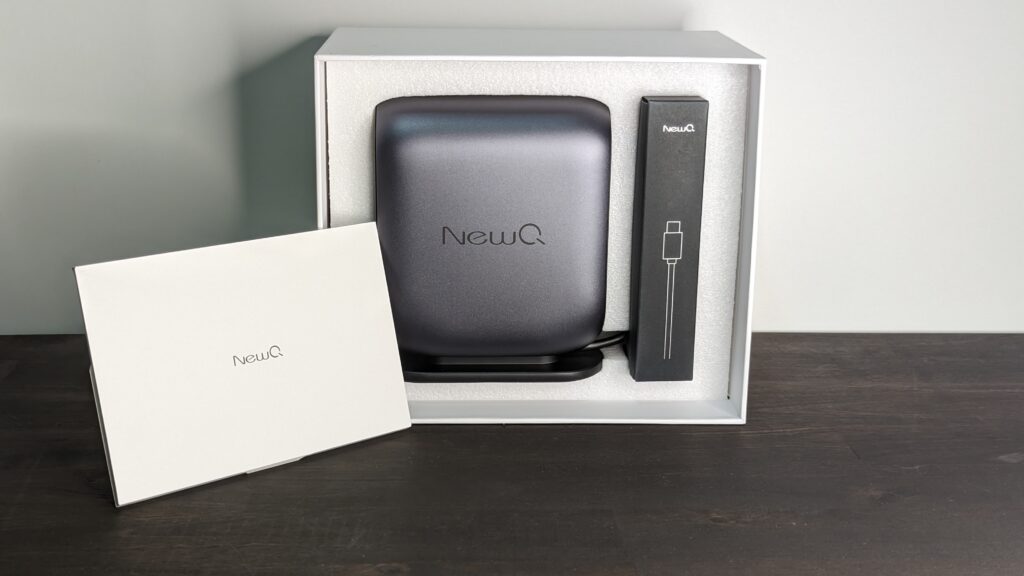
In the box, there is the docking station itself, the power supply, and the user manual. Interestingly, NewQ has decided to go with a fixed cable rather than a USB Type-C port and detachable cable. This could be their approach to remedying the slew of incompatible and potentially dangerous cable possibilities resulting from the ubiquity of USB Type-C and the lack of a proper minimum power specification for use with the Type-C connector.
The NewQ 16-in-1’s housing is a metallic material, which undoubtedly contributes to the general heft of the device. The overall aesthetics appears, to me at least, to belong to a bygone era. It doesn’t look bad by any means. It just doesn’t embody the simplicity or the less-is-more design language of contemporary devices. Because of this, the NewQ 16-in-1 gives me impressions of a not-so-retro-near-future-istic appeal. Again, the NewQ 16-in-1 isn’t poorly designed. My opinion is simply that it has a lot going on for something that shouldn’t be taking centre stage on your desk.
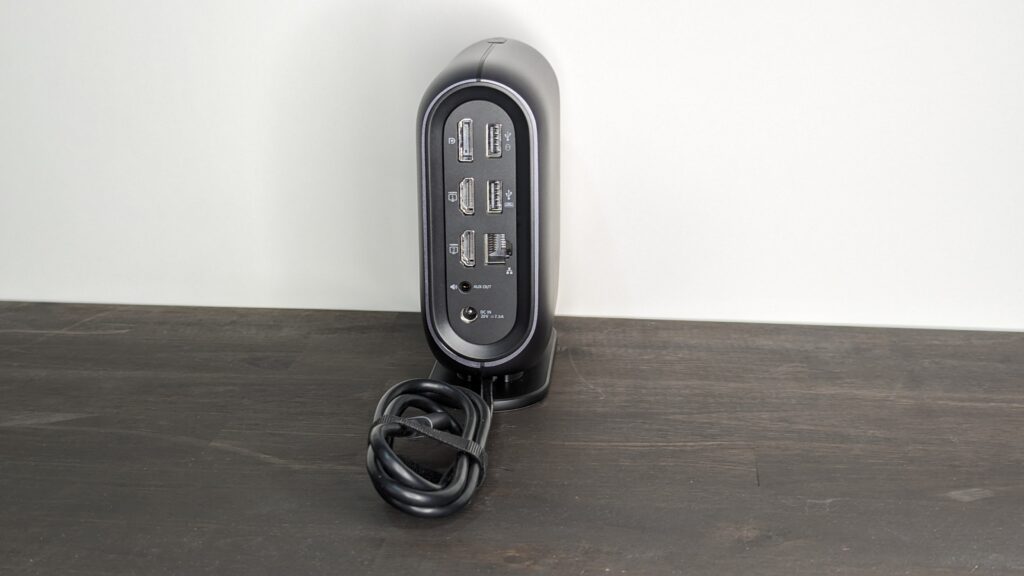
My taste aside, the NewQ 16-in-1 would absolutely look fine in any professional business setting. Its appeal, while outdated in my opinion, is still well within the realm of professional and business-minded design language. It would not look out of place in home or business settings. In fact, because of the density of the connectivity, I think that it can make some environments look even more professional due to its potential to declutter desks and wrangle cables.
Daily Driving the NewQ 16-in-1
The NewQ 16-in-1 uses the DisplayLink driver. Before installing that driver there will be some limitations to its functionality, though, I can’t say exactly which limitations because it was already installed on my system. That said, the driver can, and should, install automatically for Windows users as it has for me in the past. Mac users can find it online. Linux users can also find instructions for installing on their respective distributions in the relevant documentation.
To put things succinctly, the NewQ 16-in-1 is my new daily driver. My day job as a Systems Administrator (not with FossBytes) lets me work from home a couple of days a week. Because of this, I’m always switching between my setup in the office and my setup at home. Docking stations have made that process extremely easy. And with the NewQ 16-in-1, I no longer have to worry about where my USB hubs or card readers are. I’ve noticed no difference in the quality of life between the NewQ 16-in-1 and the Ugreen docking stations I’ve reviewed, or even the quote-unquote professional-grade docking stations I’ve used like the Surface dock or the HP Thunderbolt G2.
On top of the various connectivity options for workflows, there’s also the 18W charging capability that’s useful when I work late. This has eliminated the need for a standalone charger that’s been occupying space on my desk for the last three years. Docking stations are incredible when it comes to decluttering desk spaces (at least when it comes to cable management), but this was surely a solid bonus.
Final Thoughts
Overall, the NewQ 16-in-1 offers an excellent value proposition by pairing a useful combination of connectivity and features with aggressive pricing in what is already a very competitive product bracket. It’s not often that I feel I can give broad recommendations without knowing the needs of an individual user, but NewQ’s 16-in-1 docking station seems to be an exception. I definitely recommend that everyone shopping for a docking station for everyday connectivity take a look at the NewQ 16-in-1.

